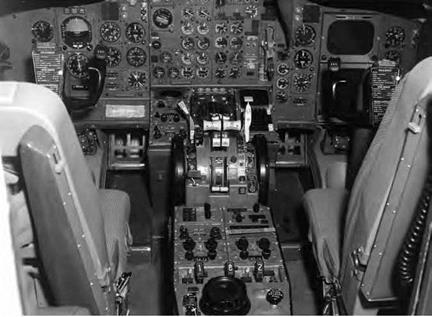High-Speed Research Program
NASA and a group of U. S. aerospace corporations began research for this ambitious program in 1990. Their goal was to develop a jet capable of transporting up to 300 passengers at more than twice the speed of sound. An important human factors-related spinoff of the so-called High-Speed Civil Transport (HSCT) was an External Visibility System. This system replaced forward cockpit windows with displays of video images with computer-generated graphics. This system would have allowed better performance and safety than unaided human vision while
|
NASA’s Boeing 737 test aircraft in 1974. Note the numerous confusing and hard-to-read conventional analog dials and gauges. NASA. |
eliminating the need for the "droop nose” that the supersonic Concorde required for low-speed operations. Although this program was phased out in fiscal year (FY) 1999 for budgetary reasons, the successful vision technology produced was handed over to the previously discussed AvSP – AvSSP’s Synthetic Vision Systems element for further development.[430]











